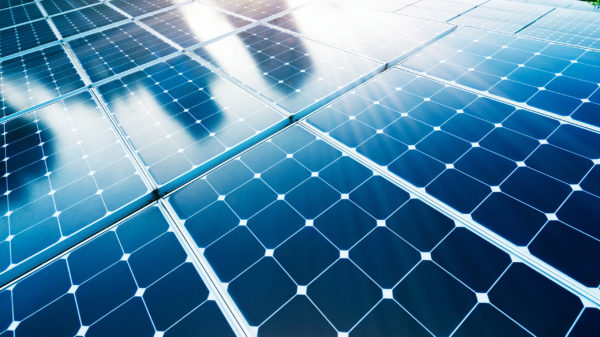PP 2014-03
Reaping the carbon rent: abatement and overallocation profits in the European cement industry, insights from an LMDI decomposition analysis
Publié dans Energy Economics (2015), 47, 189-205.
Frédéric Branger – Philippe Quirion
Résumé
Cet article analyse les variations des émissions de CO2 de l’industrie cimentière Européenne de 1990 à 2011, au niveau Européen (UE 27), et au niveau national pour six grands producteurs (Allemagne, France, Espagne, Royaume-Uni, Italie et Pologne). La méthode utilisée est la technique LMDI (Log-Mean Divisia Index), en croisant trois bases de données : GNR (Getting the Number Right) développée par la Cement Sustainability Initiative, EUTL (European Union Transaction Log) et Eurostat (commerce international).
Cette méthode de décomposition permet de séparer sept canaux de changement d’émissions : l’activité, le commerce de clinker, l’intensité clinker du ciment, les combustibles alternatifs, l’efficacité énergétique (thermique et électrique) et la décarbonisation de l’électricité. Hormis une tendance de réduction des émissions de faible amplitude due à des améliorations technologiques (en premier lieu de la baisse de l’intensité clinker du ciment, puis d’une augmentation des combustibles alternatifs), la plupart des variations des émissions peuvent être attribuées à l’effet des activités.
L’utilisation de scénarios contrefactuels permet ensuite d’estimer que l’introduction du SCEQE (EU ETS) a apporté un abatement technologique faible mais positif (2.0% plus ou moins 1.1%). D’autre part, nous trouvons que l’industrie cimentière Européenne a gagné 3.5 milliards d’euros de « profits de surallocation », la majeure partie due au ralentissement de la production. D’après ces résultats, nous recommandons un système d’allocations de quotas proportionnel à la production, basée sur un benchmarking hybride (clinker et ciment) contraignant.
PP 2014-02
Assessing and ordering investment in polluting fossil-fueled and zero-carbon capital
Oskar Lecuyer – Adrien Vogt-Schilb
Résumé
Cet article étudie la transition du capital polluant (centrales au charbon) vers du capital plus propre ( centrales à gaz) et vers du capital zéro carbone (énergie renouvelable). Nous modélisons la rareté des ressources, l’irréversibilité des investissements, les couts d’ajustement et un budget carbone. Affin de lisser l’investissement et les couts associés, il est optimal de commencer à construire des centrales renouvelables coûteuses avant d’épuiser les ressources fossiles peu couteuses.
Investir dans des centrales à gaz à permet toutefois de construire moins de renouvelable à court terme et de déplacer les efforts du court vers le moyen terme. Enfin, le critère populaire du cout moyen actualisé de l’électricité (LCOE, levelised costs of electricity), est biaisé en faveur des technologies intermédiaires (gaz) et en défaveur du renouvelable s’il est calculé à partir des prix courants.Ces résultats sont illustrés par des simulations numériques du secteur électrique européen calibrées sur les hypothèses de la feuille de route à 2050 de la Commission Européenne.
PP 2014-01
Towards a Clean Vehicle Fleet: from Households’ Valuation of Fuel Efficiency to Policy Implications
Bénédicte Meurisse – Maxime Le Roy
Résumé
Le comportement des ménages au regard de l’efficacité énergétique de leur véhicule est examiné dans ce papier. Nous proposons d’approcher le Consentement à Payer (CAP) pour une meilleure efficacité énergétique du véhicule par la variation de revenu compensatoire. Plus précisément, nous distinguons le consentement à payer ou à recevoir (CAR) pour l’achat d’un véhicule moins consommateur de carburant du CAP théorique pour une réduction de la consommation de carburant sans devoir changer de véhicule. Puis, en supposant que le ménage est contraint de changer de véhicule, nous estimons le CAP pour l’achat du véhicule le plus efficient.
Les impacts d’une taxe sur le carburant et/ou d’un système de bonus-malus sur le CAP pour l’achat du véhicule le plus efficient et sur les distances parcourues en véhicule particulier sont également discutés. Nous trouvons que le CAP pour l’achat du véhicule le plus efficient diminue avec l’instauration de la taxe. Au contraire, l’instauration d’un système de bonus-malus conduit à une hausse du CAP pour l’achat du véhicule le plus efficient. Toutefois, diminuer le prix de marché d’un véhicule (i.e. avec un bonus) augmente le risque d’effet rebond. Cependant, une taxe sur le carburant, pourvu qu’elle soit suffisamment élevée, permet d’annuler l’effet rebond.






